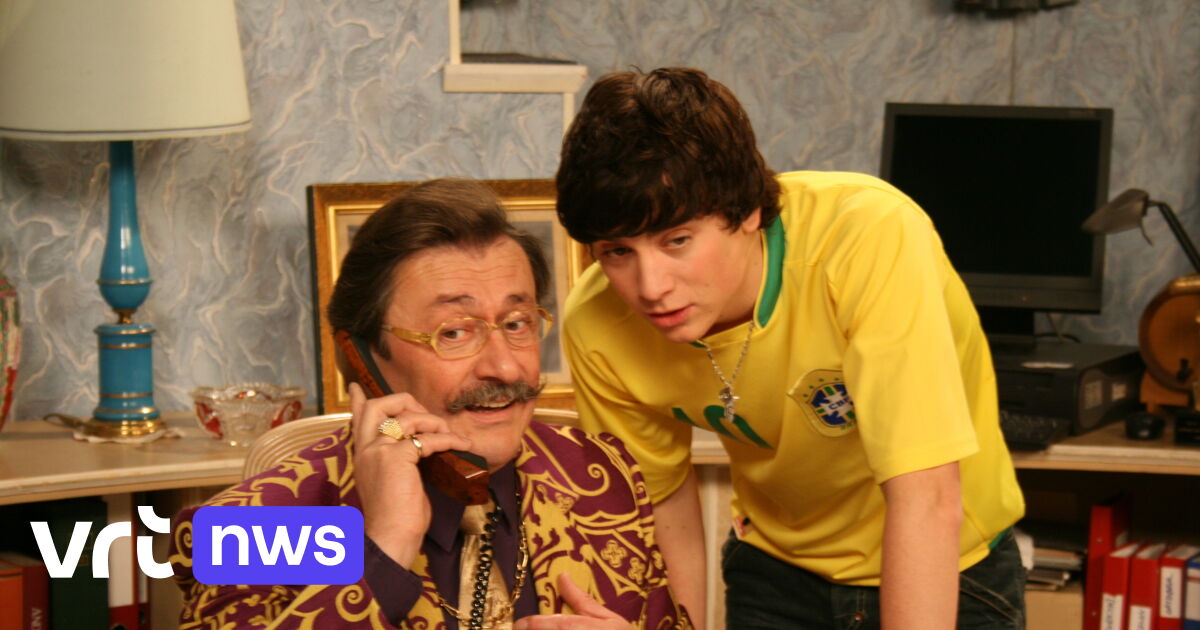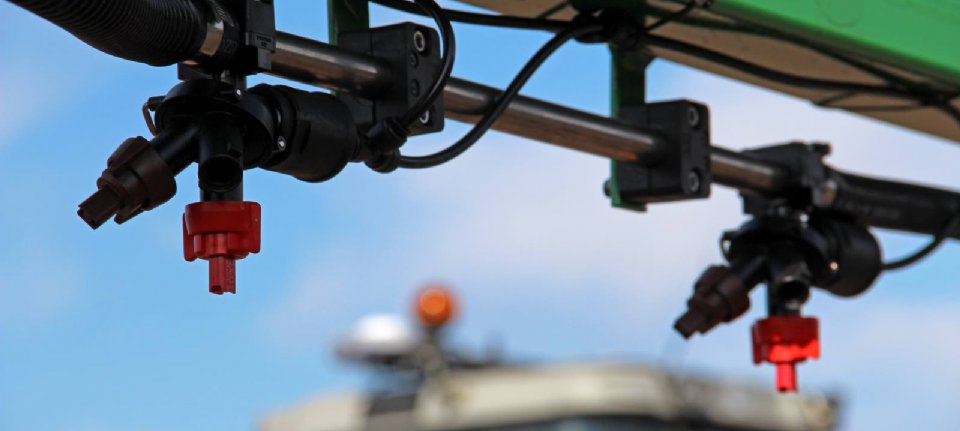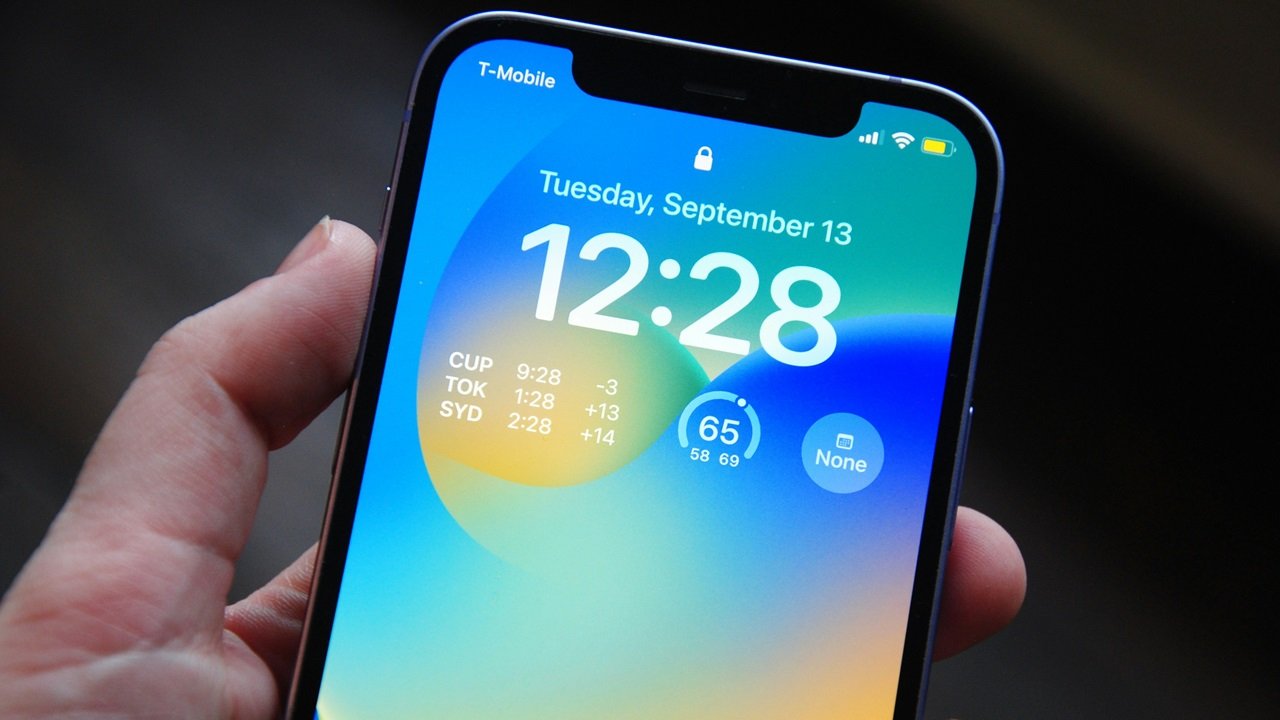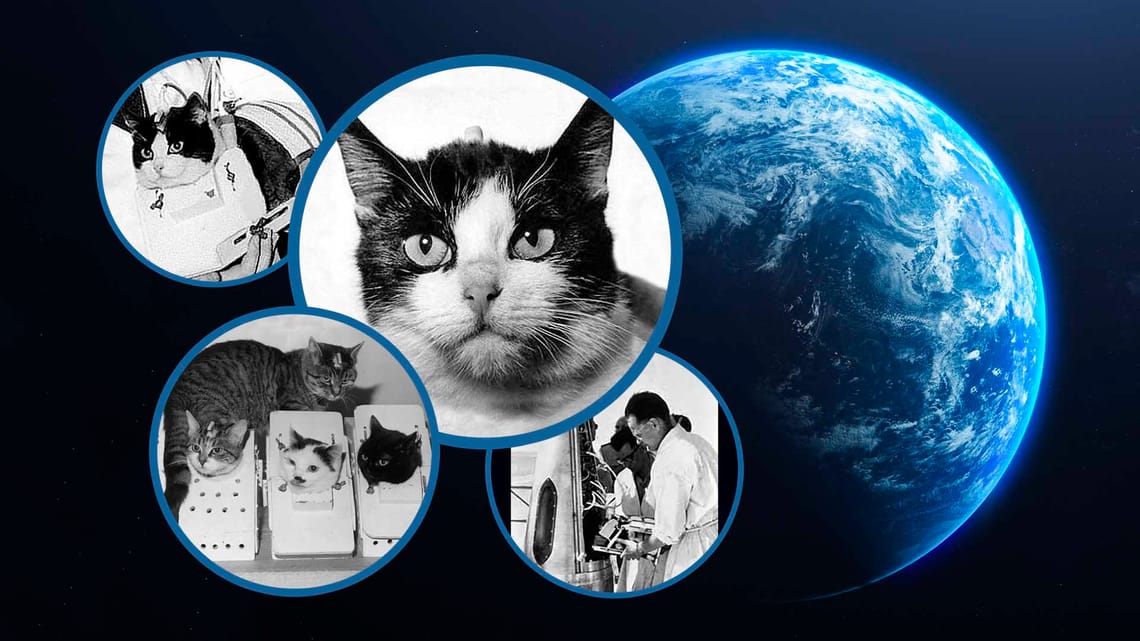When we talk about animals in space, the first names that usually come to mind are: Belka and StrelkaBrave dogs that traveled beyond our planet. But there’s another remarkable space traveler worthy of our attention: Felicite, the little black-and-white kitten who made history in October 1963. Felicite remains largely unknown in the annals of space exploration despite her incredible journey.
Contents
Cats in Space: Origin of the Idea
The idea of sending a cat into space came from scientists of the French Center for Education and Research in Space Medicine (CERMA) in the early 1960s. They were curious about how a cat’s sensitive vestibular organ, which helps it maintain its balance on Earth, would react in the weightlessness of space..
In 1963, CERMA selected 14 potential astronauts, some of whom were taken from the streets of Paris. All of the cats were female due to their calmer nature. They underwent further selection and two months of special “astronaut training” in preparation for their flight.
Scientists decided to send a cat on a suborbital flight. The launch vehicle had to reach an altitude of 100 kilometers (the “space limit”), then climb a little higher where the capsule with the cat inside would separate from the rocket, spend several minutes in weightlessness and return to Earth. During the entire trip, the cat had to be secured in a special container in a lying position.
The entire journey should take about 15 minutes, but it is difficult for cats to sit still for even that short period of time. So Preference was given to calmer and more agile cats.
The cats were placed in containers for increasingly longer periods of time, spun in centrifuges to simulate release and return forces, and tested for calmness and adaptability. Electrodes were also implanted in them to monitor brain activity.

A certain black and white cat stood out. At that time it was known only as C341; To avoid emotional attachment to the test objects, the scientists did not give the cats names, only numbers. Its weight is 2.5 kg The C341 was chosen as the best because of its quiet behavior and decent weight.
Felicite release day

On October 18, 1963, Félicité made her historic flight as part of the French space program. The Véronique AG1 rocket carried the cat in a capsule to an altitude of 157 kilometers and it officially entered space.

Felicite’s time in the room was limited to about five minutes. Unlike space tourists, she had no view of Earth from her capsule.
During the flight, the kitten experienced up to 9.5 grams of force – almost double what it was The Apollo astronauts’ experience as they launched to the moon! But flight data confirmed this Felicite remained completely calm. In fact, she was the right choice for this task, as any kind of panicked response on her part would have made the brain signals impossible to interpret.
During landing, Félicité encountered “only” 7 g until her capsule’s parachutes opened. Thirteen minutes after launch, the capsule descended safely to Earth and landed upside down, an impressive feat for a cat.
It took scientists about 15 minutes to locate Felicite and recover her after she landed. Amazingly, it emerged from its capsule unscathed, which is a testament to the success of its mission.
Consequences of flight: the fate of the first cat in space
After the C341 returned safely to Earth, the flight data was released to the media. They named the cat Felix, after the animated series “Felix the Cat”, mistakenly believing that C341 was a male cat. CERMA changed it to the female version, Félicette, and officially adopted the name.
Although Felicite’s launch was a scientific success, her fate was less fortunate. Investigators conducted several tests on her about two months after her return. However, the electrodes implanted in its brain had to be removed before the flight so that scientists could obtain all the necessary information about the cat’s vestibular equipment and brain. To do this, they put Felicite to sleep.
Scientists later admitted that they had learned nothing useful from the autopsy. No other cat has been sent into space, and Felicite remained the first and only cat to go into space.
Why was Felicite forgotten?
Despite her contributions to science, Félicité received much less recognition than other astronauts. For example, a funeral was held for the chimpanzee Ham at the International Space Hall of Fame, while memorials were held for the dog Laika. On the other hand, Félicité received limited recognition, with stamps even incorrectly describing her as a male cat named Felix.

One reason for Félicité’s obscurity may be that early space history often focused on the rivalry between the United States and the Soviet Union, leaving France and its space program in the background.
Another possible reason Felicite appears Pictures of him with electrodes implanted in her skull were not well received by the emerging animal rights movement.
Felicite Memorial Statue
However, in 2017, Felicite’s story took a turn as an enthusiast Matthew Serge Jay A Kickstarter campaign was started in her honor. More than 1,100 people donated and the campaign raised $57,000 to honor Felicite’s memory. The money was spent on a 1.5 meter high bronze statue of Felicite, designed by sculptor Gil Parker..

The statue shows Felicite sitting on the ground, looking up at the sky she once crossed. It was unveiled on December 18, 2019, nearly six decades after its flight, on the campus of the International Space University in Strasbourg.
Commemorating Félicette, the first cat in space
Next time you look up at the night sky, think of Felicite, the brave cat who defied gravity and entered the unknown! Let the story remind us of the amazing contributions animals have made to our exploration of space.

“Total coffee specialist. Hardcore reader. Incurable music scholar. Web guru. Freelance troublemaker. Problem solver. Travel trailblazer.”







More Stories
The consultation is open for mandatory use of alternatives to chemicals
The irritated bacteria adapt
Lessons for “new” Vinex neighborhoods: Keep the space flexible